Refosco di Faedis
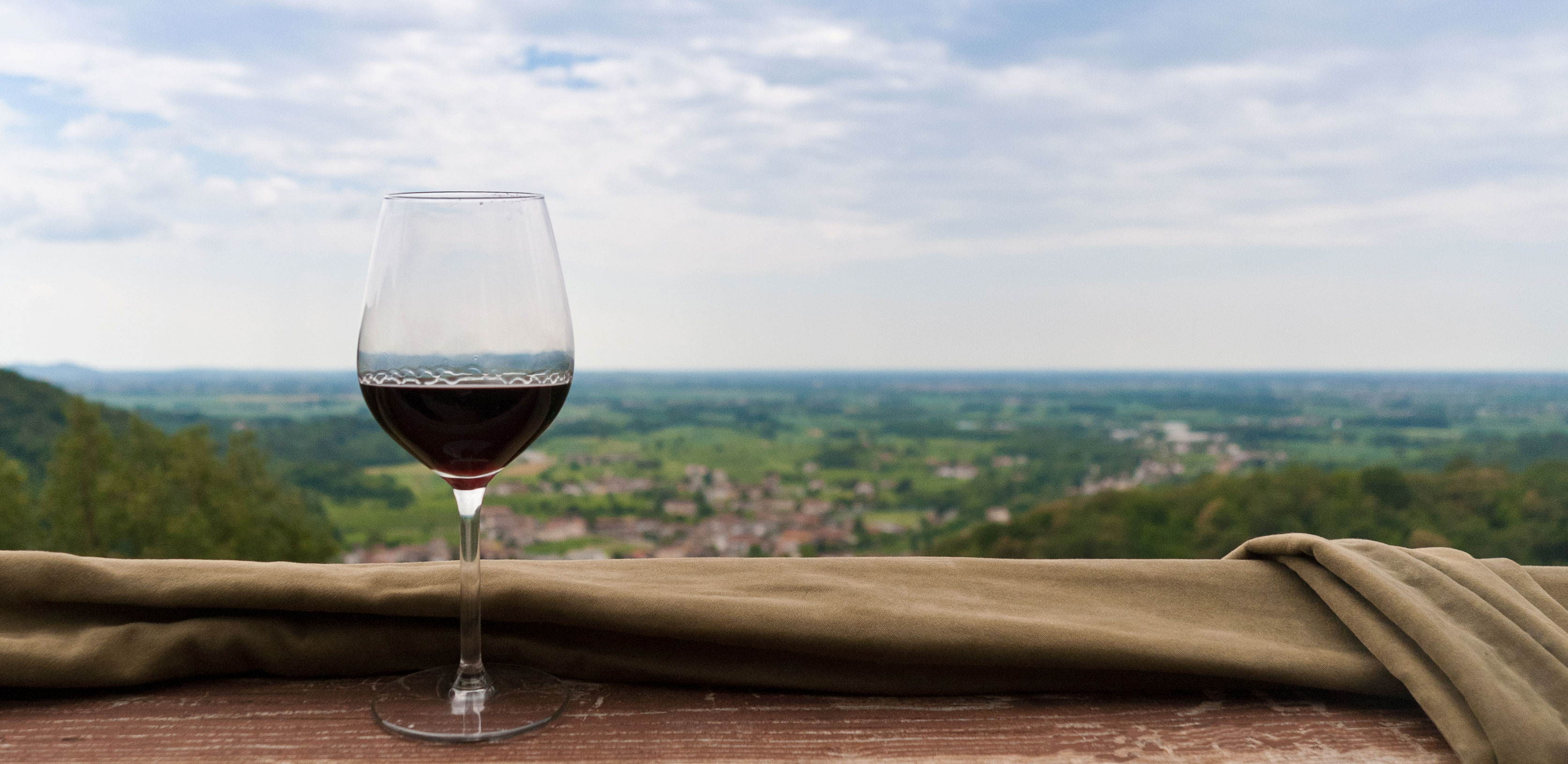
Native "Refosco di Faedis" grapes are the original and traditional variety grown in a territory that does not always ensure optimal conditions for wine-growing.
Foothill orography, the different exposure of vineyards, the extreme variability of climatic conditions and land composition (ponca and clay) all make it difficult for vines to extract the nutritive substances necessary for their survival.
Yet it is precisely because of such variable and even "poor" elements that the grapes manage to "fix" variegated and original sensorial features in this wine as a sincere expression of the local "terroir".
Refosco di Faedis, served in a large glass, has an intense ruby red colour with evident violet reflections that tend to garnet with ageing. Rich extracts ensure good consistency.
The bouquet ranges from floral sensations (violets and dog rose) to fruity hints (dewberry and wild fruit); the original and absolutely typical tone is in any case enhanced by evident minerals, accompanied by hints of undergrowth, wet leaves and slats of old chestnut barrels.
Dry, rather warm and sapid to the taste, it exalts sensations of freshness and evident tannins that set it among wines by no means excessively balanced but nevertheless an ideal accompaniment with food. Moderate ageing attenuates acid and tannin components to release hints of wild spices and coffee.
REFOSCO DI FAEDIS
HISTORICAL VINEYARDS
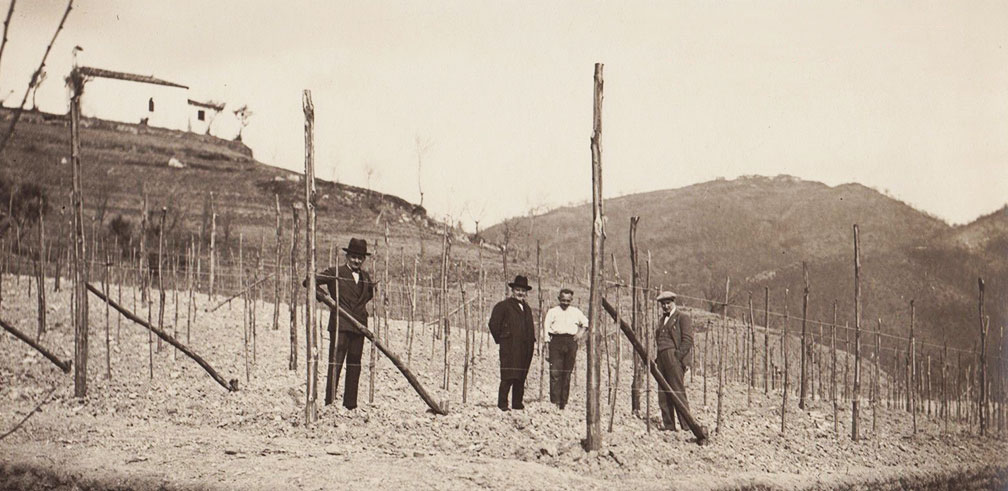
VINEYARDS
 The hilly areas are marly, in parts sandy; this soil type allows the vine to produce specifically structured grapes rich in sugar. The areas at the foot of hills are clayey giving the fruit structure and aroma. In the Faedis area, on the surface you find alluvial soil from the Grivò torrent with gross skeleton mixed with clay, producing sweet grapes rich in primary aroma.
The hilly areas are marly, in parts sandy; this soil type allows the vine to produce specifically structured grapes rich in sugar. The areas at the foot of hills are clayey giving the fruit structure and aroma. In the Faedis area, on the surface you find alluvial soil from the Grivò torrent with gross skeleton mixed with clay, producing sweet grapes rich in primary aroma.
Selecting the best agro-techniques for this vine, linked to the wine-making targets the winemakers adhering to the project have set themselves, is an objective we went for by visiting vineyards several times: to choose the best winter and summer pruning moment, correct soil management, appropriate fertilizer and the best plant pathology fully respecting the environment.
To rationalise agronomic intervention, we analysed territory climate data continually. This stage is really important as it allows winemakers to manage their vineyards with enough critical autonomy.
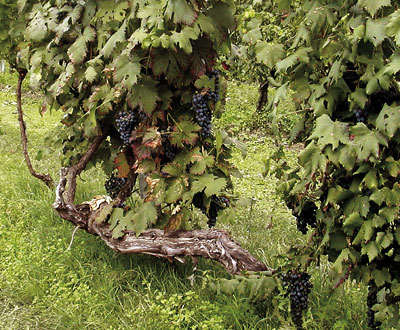 In the meantime, we began the search the Faedis town area and surroundings for vine-stocks and vineyards that were at least eighty years old, to collect bio-types to be planted in 2007 together with recognised clones available on the market, through sensitising winemakers to safeguard historical vineyards part of this particular area of Friuli.
In the meantime, we began the search the Faedis town area and surroundings for vine-stocks and vineyards that were at least eighty years old, to collect bio-types to be planted in 2007 together with recognised clones available on the market, through sensitising winemakers to safeguard historical vineyards part of this particular area of Friuli.
These two years work have permitted us to single out the biotypes present all over the regional area, select and multiply them; to establish that 1600° thermal degrees are enough to guarantee good grape ripening in normal rain conditions; to state that the best soil for this vine is the sandy-marly type on the hillside and that the alluvial plain can provide just as good products by using an accurate, targeted vine cultivation technique; to analyse the cultivation and historical-cultural features of this ancient Refosco that has left evident traces in Friuli vine growing, finding further confirmation of the importance behind valorising it.
* By Carlo Petrussi “Choosing the most suitable agro-technique to improve quality and optimise relations between plant and environment in Refosco di Faedis”.
HOW TO TASTE "REFOSCO DI FAEDIS"
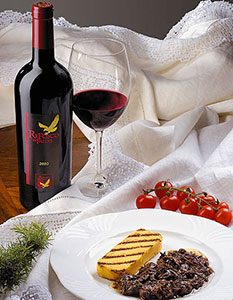 REFOSCO DI FAEDIS WITH JUGGED BOAR AND POLENTA
REFOSCO DI FAEDIS WITH JUGGED BOAR AND POLENTA
Jugged boar with polenta is best accompanied by a moderately aged Refosco di Faedis refined in barrique to offset this succulent dish with the tannins of the wine; the delicate sweetness of the meat and the marinated herbs – naturally prepared with Refosco - are matched by its still-evident acidity. The spicy hints of the wine enhance those of the dish itself.
 REFOSCO DI FAEDIS WITH MUSETTO AND CREAMED POTATOES
REFOSCO DI FAEDIS WITH MUSETTO AND CREAMED POTATOES
Musetto with creamed potatoes and the typical salame baked in ashes. The main sensations especially focus on the fatty minced meat, while spices are less evident: this dish should be paired with a young, medium-bodied Refosco di Faedis, vinified in steel with marked acidity.
 REFOSCO DI FAEDIS WITH LAMB CHOPS
REFOSCO DI FAEDIS WITH LAMB CHOPS
Grilled lamb chops served on a bed of fresh savoy cabbage are ideal with a young Refosco di Faedis with good tannin, vinified in steel and enjoyed in a large glass at a temperature of 16° - 17°C.
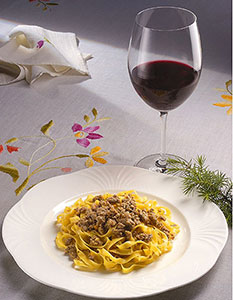 REFOSCO DI FAEDIS WITH PAPPARDELLE WITH DUCK SAUCE
REFOSCO DI FAEDIS WITH PAPPARDELLE WITH DUCK SAUCE
Pappardelle with duck sauce a very succulent dish with a rather evident sweet character: as a contrast pairing, try Refosco di Faedis refined in barrique, valorizing composition through its bouquet with hints of vanilla.
TRADEMARK "REFOSCO DI FAEDIS"
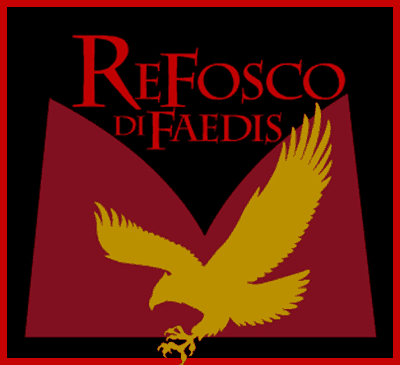 In order to define the formal features of the trademark, we focused on the ancient soul of the Refosco di Faedis territory to identify a central theme that, as work progressed, would not only emerge as a strong and easily-recalled structural element but also and especially capture and promote the communicative allure of this wine and its intimate, indissoluble and expressive links with the local area: an area characterised by evocative features echoing Mediaeval iconography through the numerous remains of period castles and their natural settings in the high plateaux in the heart of the Colli Orientali del Friuli region.
In order to define the formal features of the trademark, we focused on the ancient soul of the Refosco di Faedis territory to identify a central theme that, as work progressed, would not only emerge as a strong and easily-recalled structural element but also and especially capture and promote the communicative allure of this wine and its intimate, indissoluble and expressive links with the local area: an area characterised by evocative features echoing Mediaeval iconography through the numerous remains of period castles and their natural settings in the high plateaux in the heart of the Colli Orientali del Friuli region.
 This explains why the trademark recalls Mediaeval/Ghibelline merlon crenelations - not so much as a reference to history but as an imaginative mark embracing far-reaching memories. The swallow tail design not only reflects the crowned defensive perimeter walls of the castles, towers and palaces of the period but also embodies a simpler iconography focusing on two positive archetypes: wings spread wide in flight to express sublime human desires, the search for inner harmony and the settlement of deep-rooted conflicts; the soft outlines of the hills rising above the valley resembling the initial creation of the world out of chaos.
This explains why the trademark recalls Mediaeval/Ghibelline merlon crenelations - not so much as a reference to history but as an imaginative mark embracing far-reaching memories. The swallow tail design not only reflects the crowned defensive perimeter walls of the castles, towers and palaces of the period but also embodies a simpler iconography focusing on two positive archetypes: wings spread wide in flight to express sublime human desires, the search for inner harmony and the settlement of deep-rooted conflicts; the soft outlines of the hills rising above the valley resembling the initial creation of the world out of chaos.
The eagle - the second main design element - suggests flight above the clouds towards the Sun as a celestial and cosmic symbol. Eagles symbolise higher spiritual levels, the direct perception of intellectual enlightenment and the pure heart.
The outline figure of the square symbolises the land, creation, stable perfection and intelligence: squares - a form of absolute perfection for Plato - are typical of many holy and sacred places, altars, temples and cities. Yet the square here also highlights and enhances two other designs expressing dynamics and movement.
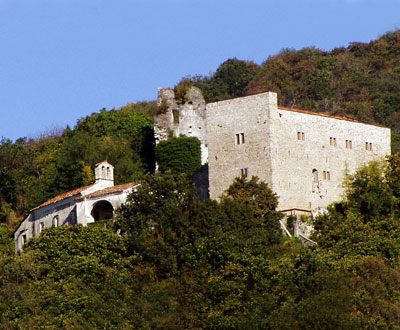 The logo was inspired by Mediaeval type-setting. This approach was taken after in-depth discussions and proposals. It is based on the impact and immediacy of the logo in embodying and dominating space against white and black fields ensuring meaningful and personal definition that can also be reproduced in the various formats required by applications and use of the trademark. The double “F” not only graphically emphasises the regal character of the name and suggests the exclusivity of the product but equally enhances its "sound" when spoken aloud - encouraging strong recall and loyalty.
The logo was inspired by Mediaeval type-setting. This approach was taken after in-depth discussions and proposals. It is based on the impact and immediacy of the logo in embodying and dominating space against white and black fields ensuring meaningful and personal definition that can also be reproduced in the various formats required by applications and use of the trademark. The double “F” not only graphically emphasises the regal character of the name and suggests the exclusivity of the product but equally enhances its "sound" when spoken aloud - encouraging strong recall and loyalty.
The main colours are red and yellow. Red is almost universally accepted as a high-impact colour since it is very closely linked with the fundamental principle of life. It is nocturnal and female, with powerful appeal; it is the colour of the inner fire of the Earth and Man, the maturity of being and the regeneration of work. Yellow - the colour of the Sun - represents vital, impulsive and generous forces, passion and beauty, free and triumphal eros, youth and love. Yellow is a warm, expansive colour; it is never dull and always goes beyond the limitations we seek to impose on it. It is the colour of awareness and intelligence, sunlight and life - and, as Kandinsky said, is always so bright that a very dark yellow is unthinkable...
Trademarks must always stimulate strong and positive impressions that "fix" subjective concepts with consumers. The inclusion of archetypal, ancient and strong-rooted symbols facilitates and simplifies this process of identification and assimilation by significantly directing consumer recall on the product itself, its sensorial sensations and its typical character - together with the specific and unique features of its "territory".
by Sirio Tommasoli “Refosco di Faedis trademark: characterising image to optimise product visibility, recall and consumer loyalty”